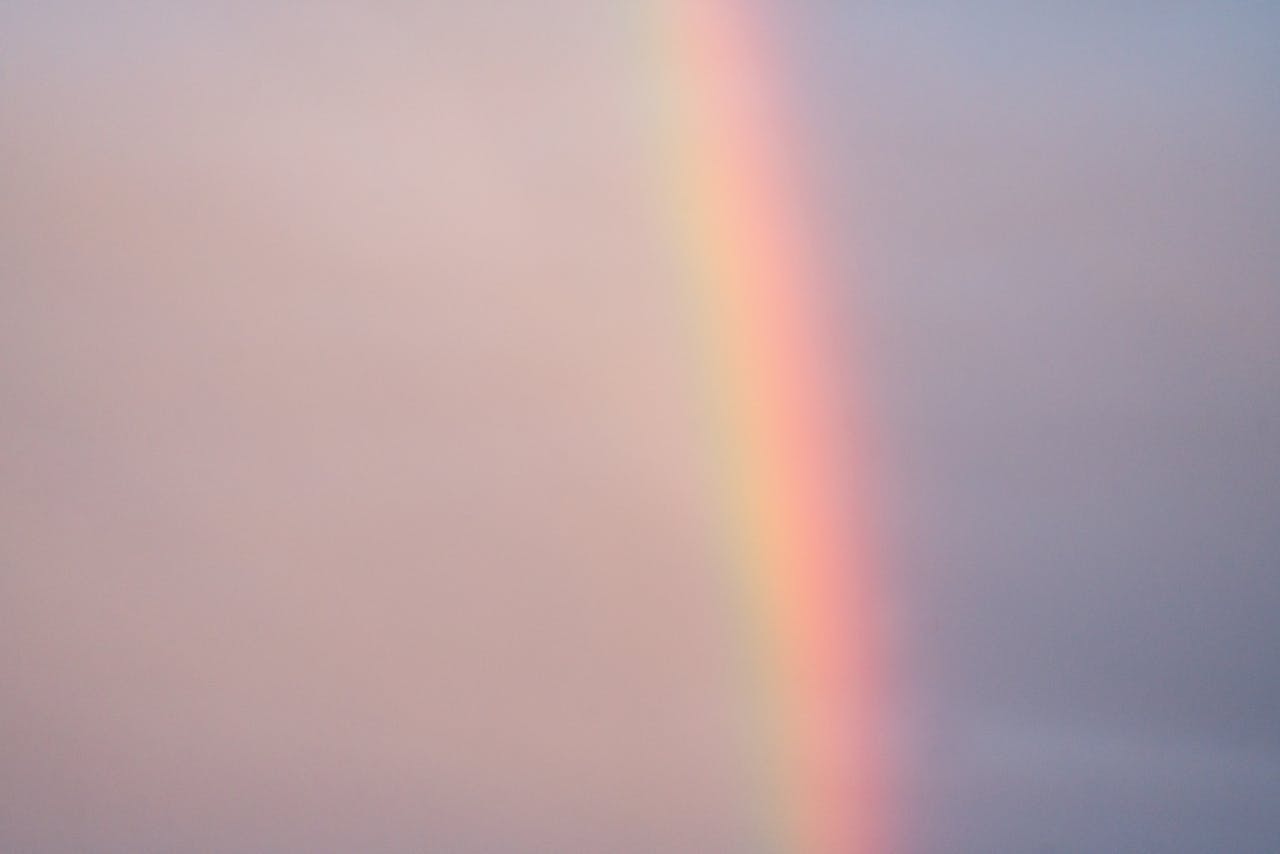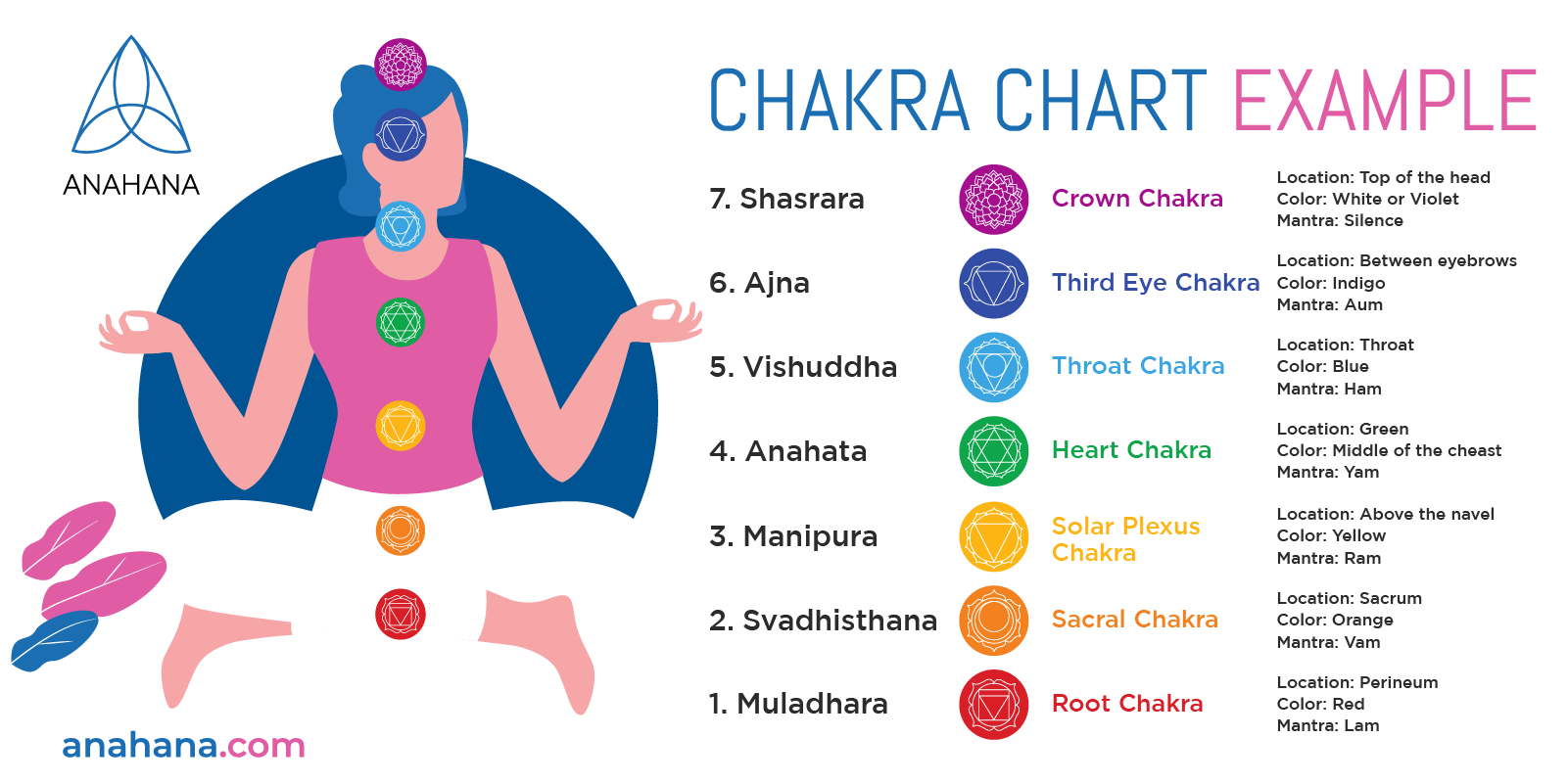
Table of Contents
Understand the significance of each color in the chakra system and learn practical ways to incorporate them into healing practices. From meditation techniques to daily mindfulness, discover how these vibrant hues can enhance your physical, emotional, and spiritual wellbeing.
Chakra Colors Defined
The concept of chakras, originating from ancient Indian traditions, refers to the seven key energy centers in the human body.
Each of these centers is associated with a specific color, which is thought to reflect its unique energy and function. The idea of chakra colors is not just a spiritual or mystical belief, but it has also found a place in modern wellness and self-improvement practices.
Take a closer look at the colors attributed to each of the seven main chakras. From the deep red of the Root Chakra to the violet of the Crown Chakra, explore what these colors symbolize and how they're often used in various practices like meditation, yoga, and therapy.
Whether you're deeply invested in holistic practices or simply curious about the significance of these colors, this exploration offers an interesting perspective on the intersection of color, energy, and wellbeing.
What is The Purpose of Chakra Colors?
The concept of chakra colors serves multiple purposes. At its core, each of seven chakra colors represents a specific energy frequency corresponding to a particular chakra, providing insights into our physical, emotional, and psychological states.
But why do these colors matter, and how are they used in practical terms?
Symbolism and Understanding
Chakra colors are deeply symbolic. They offer a visual language to understand the different energies and aspects of our being.
For instance, the red of the Root Chakra symbolizes grounding and survival instincts, while the violet of the Crown Chakra represents spiritual connection and consciousness.
By associating colors with these energy centers, it becomes easier to identify and understand the various facets of our personal experiences and wellbeing.
Tools for Meditation and Healing
In practices like meditation and energy healing, chakra colors are employed as focal points or visual aids. Meditators might visualize a specific chakra color to enhance concentration, balance energy in the body, or cultivate certain qualities.
For example, focusing on the blue of the Throat Chakra can aid in improving communication and self-expression.
Psychological Impact
Colors have long been known to have psychological effects. The chakra colors are no exception. They can influence mood and emotions.
For example, the warmth of the orange in the Sacral Chakra can stimulate creativity and joy, while the green of the Heart Chakra can evoke feelings of love and compassion.
Engaging with chakra colors can, therefore, be a means of tapping into and modifying our emotional landscape.
Bridging Physical and Spiritual Health
Chakra colors also symbolize the connection between the physical and the spiritual. Each chakra, located at a specific point in the body, relates to physical organs and functions.
The colors help in visualizing this connection, making it easier to address specific physical ailments or emotional issues through spiritual or energy-focused practices.
Chakra Balancing Through Color Therapy

Color therapy is a great way to dig into the subtle energies of the seven chakras. Practitioners can match color with its energy center to activate energy flow. Here are some energy-healing exercises that utilize color therapy:
Color Meditation
Visualization meditation allows practitioners to think about the color of the chakra they wish to concentrate on. Visualizing colors can aid in balancing chakras.
Home Decor
Decorating one’s home with the color of a chakra that is out of balance can send it balancing energy. Giving it extra attention can create a steady flow of energy and heal it over time.
Clothing and Accessories
Wearing clothes and accessories matching the color of a corresponding chakra will help you carry this energy throughout your day. This will give you an energy boost tailored to a particular chakra.
Stone Therapy
There are individual chakra crystals and gemstone that correspond to the chakra energy.
Any stone that matches the chakra's color can harmonize with the chakra, but specific stones have notorious chakra healing properties.
To help balance chakras, the stones that correspond to each chakra are:
-
Root Chakra crystals: Red Jasper
-
Sacral Chakra crystals: Citrine
-
Solar Plexus Chakra crystals: Tiger's eye
-
Heart Chakra crystals: Rose Quartz
-
Throat Chakra crystals: Aquamarine
-
Third Eye Chakra crystals: Amethyst and Lapis Lazuli
-
Crown Chakra crystals: Clear Quartz
The Root Chakra (Muladhara): Red
The Root Chakra is located at the base of the spine, acting as our foundation and creating a base for the upper six chakras. It informs our basic human needs, including survival and security instincts.
The Root Chakra energy is the opening and anchor to the following chakras, connecting us to courage, willpower, vitality, safety, and security.
The red chakra is the most visually stimulating color that signals warning and danger. When the Muladhara chakra is out of balance, we may feel unsafe, insecure, and disconnected.
It connects to our most basic physical needs, such as food, physical health, finances, and more. The Root Chakra informs the health of many of our lower organs, including the kidneys, spine, and large intestine.
The Sacral Chakra (Svadhisthana): Orange
The location of the Sacral Chakra is in the upper abdomen. It connects the sense of taste in the human body, linking to many lower organs, including the bladder, lymphatic system, and female reproductive organs.
It deals with people’s confidence and closely correlates to one’s self-worth. The second chakra also connects one to inner wisdom and drives personal development.
With such a strong correlation to self-confidence, it makes sense that the orange chakra is the Sacral Chakra - the color of joy, vitality, and strength. The color orange is a combination of red and yellow, addressing power.
A blocked sacral chakra often leads to poor interpersonal and sexual boundaries, and feeling detached from one’s soul.
The Solar Plexus Chakra (Manipura): Yellow
The Solar Plexus Chakra, or Manipura Chakra, is located above the navel and informs one's power, self-esteem, and confidence. It is the primary source of personal power, heavily influencing our professional and personal success.
The Solar Plexus Chakra color is yellow. The yellow chakra symbolically represents the third chakra with the color of sunshine that manifests self-confidence. The third chakra is associated with organs, including the liver, stomach, bladder, and intestines.
The Heart Chakra (Anahata): Green
The Heart Chakra (Anahata Chakra) is the center of the chakra system, connecting the bottom and the top chakras. It is located just above the heart in the center of the chest and links one’s divine self with their human self. As the balance point of all the other chakras, it is the center for compassion, forgiveness, empathy, and love.
The green chakra represents growth and health. With equal amounts of yellow and blue in the color green, the fourth chakra has equivalent attributes to these colors.
It connects to specific organs in our physical body, including the heart and the lungs.
The Throat Chakra (Vishuddha): Blue
The Throat chakra is the fifth chakra energy center located in the throat area. It is all about self-expression and speaking your truth.
Physical symptoms of a blocked throat chakra make it challenging to communicate our truth effectively.
The Throat chakra color is blue, associated with intuition, sensitivity, and wisdom. The blue chakra provides calm energy to the mind to slow down racing thoughts.
As the fifth chakra relates to our communication ability, it connects to the respiratory system, vocal cords, and mouth area.
The Third Eye Chakra (Ajna): Indigo
The Third Eye Сhakra is located between the eyebrows and connects to its surrounding organs, such as the eyes, brain, and pituitary gland.
As the sixth chakra, it informs vision, clarity, higher consciousness, self-awareness, and intuition. It also leverages the connection between one's soul and the world.
The Third Eye Сhakra color is indigo - a dark blue color combining blue and red. With the calmness of blue and the energy of red, indigo is a color of balance.
As the color of the night, the indigo chakra connects to self-expression and profound awakening.
The Crown Chakra (Sahasrara): Violet
Unlike the other chakras, the Crown Сhakra exists outside the human body. It radiates upward and outward just above the crown of the head, connecting one to their higher self and the universal consciousness.
The Crown Сhakra is the accumulation of kundalini energy from all the chakras. The Sahasrara chakra enlightens the spiritual connection and links to several vital structures, including the hypothalamus, pituitary, and pineal gland.
With the most spiritual properties of the chakra system, the Crown Сhakra color is purple. The purple chakra has the highest vibrating color and is one of mystery, magic, and purification, appropriately representing the seventh chakra.
Although it is also associated with white and gold, violet is used most in color therapy.
Frequently Asked Questions
What are chakra colors?
Chakra colors are the seven hues that represent the energy centers in our body. Each color corresponds to a specific chakra and its functions.
How many chakra colors are there?
There are seven main chakra colors, ranging from red at the base to violet at the crown.
Can chakra colors affect my mood?
Absolutely. Aligning your chakras can influence your emotional state, helping you feel more balanced and focused.
Science reveals that each color carries a unique wavelength and frequency. The main idea behind color therapy is that different colors evoke different psychological and physiological responses.
References
A Complete Guide to the Chakras and Their Effects on the Mind, Body and Spirit
https://www.yogabasics.com/connect/yoga-blog/chakra-colors/
Chakras: Energy Centers of Transformation
https://www.colorpsychology.org/chakra-colors/
Disclaimer
The contents of this article are provided for informational purposes only and are not intended to substitute for professional medical advice, diagnosis, or treatment. It is always recommended to consult with a qualified healthcare provider before making any health-related changes or if you have any questions or concerns about your health. Anahana is not liable for any errors, omissions, or consequences that may occur from using the information provided.

By: Meriah McCauley
Meriah McCauley is a leading voice in holistic healing, known across North America for her expertise in chakra balancing, spiritual alignment, and energy-based wellness. Her work bridges the art and science of mind-body healing, shaped through years of study, practice, and mentorship. Meriah deepened her understanding of spiritual anatomy and the chakra system under the guidance of her guru, Dr. Don Stapleton, during her immersive training in Costa Rica. She later earned her Master’s degree in Psychology from Columbia University, specializing in Spirituality and the Mind–Body connection, which continues to influence her integrative approach. Today, she supports individuals and practitioners through coaching, yoga teacher trainings, chakra-focused education, and Holotropic Breathwork for personal transformation. Meriah is dedicated to helping others develop emotional clarity, energetic balance, and spiritual resilience—and she remains committed to guiding anyone seeking a deeper, more meaningful connection with themselves.